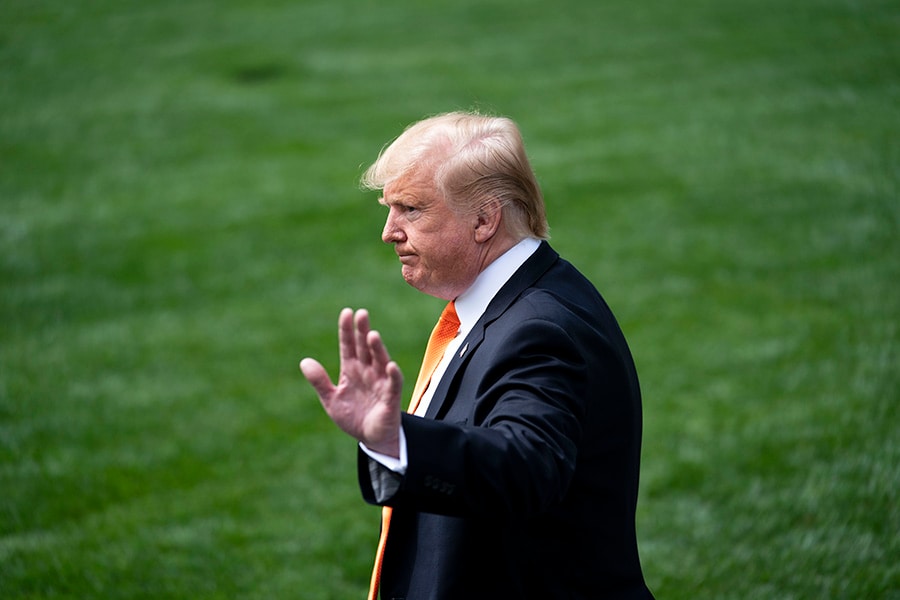
China retaliates, raising tariffs against U.S. goods
Both China and the United States have left a window for negotiators to try to reach a deal before the latest round of higher tariffs goes into effect
 President Donald Trump while talking to reporters outside the White House before departing for a trip to discuss opioid abuse prevention and drug pricing, in Washington, April 24, 2019. Trump on May 13 defended his decision to ratchet up the trade war with China, insisting his policy was good for the United States, a day after his economic adviser said American consumers would be hit with some of the costs
President Donald Trump while talking to reporters outside the White House before departing for a trip to discuss opioid abuse prevention and drug pricing, in Washington, April 24, 2019. Trump on May 13 defended his decision to ratchet up the trade war with China, insisting his policy was good for the United States, a day after his economic adviser said American consumers would be hit with some of the costsImage: Doug Mills/The New York Times
WASHINGTON — The United States and China intensified their trade dispute Monday, as Beijing said it would increase tariffs on nearly $60 billion worth of U.S. goods and the Trump administration detailed plans to tax nearly every sneaker, computer, dress and handbag that China exports to the United States.
The escalation thrust the world’s two largest economies back into confrontation. While President Donald Trump said Monday that he would meet with China’s president, Xi Jinping, next month in Japan, the stakes are only increasing as the president continues to taunt and threaten China, causing it to retaliate on American businesses.
Financial markets fell Monday after China detailed plans to increase tariffs, with the S&P 500 down more than 2.4% for the day and more than 4% this month. Shares of companies particularly dependent on trade with China, including Apple and Boeing, fared poorly, and yields on three-month Treasury securities exceeded those on 10-year bonds, a sign that investors may be souring on the outlook for short-term economic growth.
China’s Finance Ministry announced Monday that it was raising tariffs on a wide range of U.S. goods to 20% or 25% from 10%. The increase will affect the roughly $60 billion in U.S. imports already being taxed as retaliation for Trump’s previous round of tariffs, including beer, wine, swimsuits, shirts and liquefied natural gas exported to China.
The move came after Trump increased tariffs on $200 billion of Chinese goods to as much as 25% on Friday, and threatened to move ahead with taxing the remainder of goods that the United States imports from China. The Office of the U.S. Trade Representative released a list Monday of the roughly $300 billion worth of products that could face up to a 25% tariff and requested public comment, which will begin the formal process for enacting those duties. The list includes almost every consumer product imaginable, including coffee makers, sneakers and telescopic sights for rifles.
©2019 New York Times News Service
















